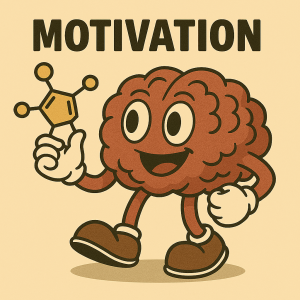Module 10: Motivation

Description: This module examines biological mechanisms underlying motivated behaviors including temperature regulation, thirst, & hunger. Students will explore homeostasis & drive-reduction theory, analyze hypothalamic control of regulatory behaviors, & evaluate hormonal & neural signals regulating eating. The module covers mechanisms of temperature regulation, osmotic & hypovolemic thirst, & hunger signals including leptin, ghrelin, & insulin.

Why This Module is Important: Understanding motivation neuroscience is essential for counseling, clinical, & health psychology, providing biological foundations for addressing eating disorders, weight management, & regulatory dysfunction.
For counselors, this module provides:
- Understanding of biological factors underlying eating disorders & obesity for informed treatment.
- Knowledge of homeostatic mechanisms relevant to discussing weight loss interventions including semaglutides.
- Insight into how biological drives interact with cultural factors in motivated behaviors.
- Framework for addressing client concerns about appetite, metabolism, & weight regulation.
For other psychology professionals, this module supports:
- Research into motivational systems & regulatory disorders.
- Clinical assessment of eating disorders & metabolic conditions.
- Health psychology applications for weight management interventions.
- Understanding of how biological & cultural factors interact in motivated behaviors.
Module Learning Objectives: By the end of this module students will be able to…
- MLO1: Identify homeostatic mechanisms, brain structures controlling motivated behaviors (hypothalamus, preoptic area), & physiological signals for temperature, thirst, & hunger regulation. (CLO1, ULO5)
- MLO2: Analyze drive-reduction theory & comparator models of homeostasis, evaluate mechanisms of temperature regulation in endotherms, & explain osmotic versus hypovolemic thirst. (CLO2, CLO3, ULO5)
- MLO3: Evaluate hormonal regulation of hunger (leptin, ghrelin, insulin), critically assess interventions for eating disorders & obesity including semaglutides, & examine ethical implications of pharmacological appetite control. (CLO2, CLO4, ULO5)
Test Yourself: If you truly “know” this material then you will be able to…
- Describe homeostasis as maintaining set points through comparator models, identify hypothalamus role in temperature & hunger regulation, distinguish preoptic area & posterior hypothalamus functions, & explain osmotic thirst (cellular dehydration) versus hypovolemic thirst (blood volume loss). (MLO1)
- Analyze drive-reduction theory where deviations create drive states, explain endothermic responses (shivering, perspiration, vasoconstriction/dilation), & evaluate how the hypothalamus integrates temperature information from skin sensors & its own receptors. (MLO2)
- Evaluate hormonal signals including leptin, ghrelin, & insulin, assess semaglutides as GLP-1 agonists, & critically examine safety & ethical considerations of pharmacological weight loss interventions. (MLO3)
Media Attributions
- Motivating Buddy © Microsoft Copilot adapted by Jay C. Brown is licensed under a CC0 (Creative Commons Zero) license
- Wanderer Above the Sea of Fog © Caspar David Friedrich is licensed under a Public Domain license
- Dopaminergic System & Reward Processing © Arias-Carrion et al is licensed under a CC BY (Attribution) license
